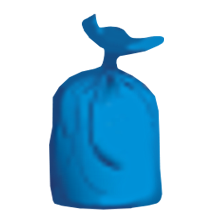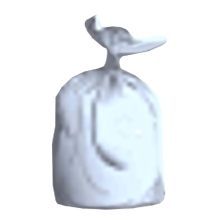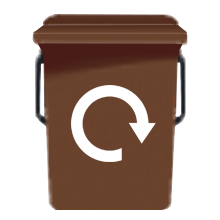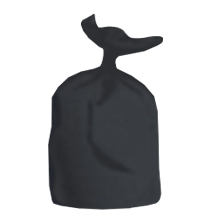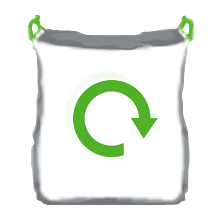It's never too early to start thinking about how you are going to feed your baby.
Breastfeeding
Breastfeeding gives your baby the best possible start in life as it has lots of benefits to both you and your baby that last a lifetime.

Your breast milk is uniquely designed for your baby's needs. It contains everything your baby needs for at least the first six months of life. After that, giving your baby breast milk along with solid food will help them continue to grow and develop.
Breastfeeding helps build a strong bond between mother and baby, both physically and emotionally as well as reducing the risk of sudden infant death.
Breastfeeding protects:
Your baby from -
- Ear infections
- Allergies
- Sudden infant death
- Childhood leukaemia
- Chest infections
- Obesity
- Gastro-intestinal infections
- Childhood diabetes
- Urine infections
You from -
- Breast cancer
- Type 2 diabetes
- Ovarian cancer
- Reduces risk of postnatal depression
- Reduces postnatal bleeding

Just like any new skill, breastfeeding may take time and practice. In the first few days, you and your baby will be getting to know each other. Close contact and skin to skin will help you become aware of the different signs and signals.
Every pregnant woman will have milk ready for her baby at birth. This is called colostrum and is yellow in colour. It is very concentrated containing the required amount of fat, protein, sugars, minerals, immunoglobulins and vitamins, so your baby only needs a small amount at each feed.
In the first few days it may seem like your baby wants to feed all the time, sometimes babies can be sleepy and will need to be encouraged to feed.
Colostrum contains antibodies to protect the newborn against disease, infection, and immune and growth factors as well as other bio actives that help to activate a newborn's immune system to help fight infection.
Putting baby skin to skin after birth will help keep them calm, steady their breathing as well as keeping them warm. Babies are often alert in the first hour after birth and keen to feed. They should be kept in skin to skin until after the first feed - this will give them the best chance to get breastfeeding off to a great start.Your midwife can help you with this.
The amount of milk you make will change with your baby's needs. Most babies will want to breastfeed around 8-10 times in a day.

Around day 3, your milk will "come in", your breasts will become fuller and can become warmer. This milk can appear thinner becoming creamier as the feed goes on. You don't need to do anything different continue to feed on demand and wear a well supporting bra.
Initially your baby will need to be fed frequently this will help to build up a good supply of milk. Gradually your baby will get into a pattern of feeding and the amount of milk you produce will adapt to the baby's needs. Let your baby decide when they have had enough.
Your baby will be happier if you keep them near you and feed them in a responsive way, this means that you offer a breastfeed as early as possible when baby shows any signs of wanting to be fed. It also helps if you offer your breast if baby is upset and needs comforted or if your breasts feel full. This will quickly help your body to produce the amount of milk your baby needs. At night, your baby will be safest sleeping in a cot in the same room as you. This makes feeding easier and will reduce the risk of sudden infant death. Try to take each day as it comes. If your breasts are uncomfortable or sore, speak to your midwife.
You can breastfeed in a variety of different positions sitting up, lying down or feeding your baby in the underarm "rugby ball" position. Find one that is comfortable for both of you and make sure that you have a drink to hand as breastfeeding may make you thirsty.



You can breastfeed twins at the same time or individually, the midwife will help you while in hospital.

These four words may be a helpful aide memoir when starting off breastfeeding. It may be helpful if you remember the first letter of these four words as CHIN:
Close - hold your baby close so that he can reach your breast easily.
Head free - try not to hold the back of your baby's head as he needs to be able to tilt his head back, instead support his neck and shoulders and allow his head to be free to tilt back.
In-line - make sure the baby's head and body are facing you and are not twisted.
Nose to nipple - start the feed with your baby's nose opposite your nipple so that when the baby attaches your nipple goes up over the baby's tongue and into the top of the baby's mouth.
How to attach your baby to the breast
Your baby's sucking causes milk stored in your breasts to be squeezed down ducts inside your breasts towards your nipples, this is called the 'let down' reflex. Some women get a tingling feeling which can be quite strong, while others feel nothing at all.
You will see your baby respond and their quick sucks change to deep rhythmic swallows as the feed progresses. Babies often pause after the initial quick sucks while they wait for more milk to be 'delivered'. If your baby falls asleep quickly before the deep swallowing stage, check that they are effectively attached on. It might be easier to get someone else to check for you. Sometimes you will notice your milk flowing in response to your baby crying or when you have a warm bath.
After your baby has finished feeding, you can hold them upright on your shoulder to see if they need to burp. Breastfed babies don't usually get as much wind as bottle fed babies.
Breast milk can be stored:
- for up to five days at 4oC or lower in a fridge in the coolest part (at the back)
- up to two weeks in the freezer compartment of a fridge
- up to six months in a domestic freezer at -18oC or lower
Breastmilk must always be stored in a sterilised container. If you use a pump to express, make sure you wash it thoroughly and sterilise it before use.
Frozen milk should be defrosted in the fridge. Once it's defrosted, you will need to use it straight away.
Bosom Buddies is a breastfeeding support group held at Bright Beginnings. It is run by a Maternity Support Worker and a Health Visitor, offering support with all aspects of breastfeeding. Contact them at: 01481 244919. The group meets every Tuesday from 12 - 2pm.
- Off to the Best Start leaflet
- Breastfeeding Checklist for Mothers - How can I tell that breastfeeding is going well?
- Breastfeeding guide Lithuanian
- Breastfeeding guide Polish
- Breastfeeding guidance Slovak
- Breastfeeding guide Turkish
Breastfeeding problems
Mastitis - Milk can build up in the ducts for a variety of reasons. The most common are baby not attached and/or feeding effectively, wearing a too-tight bra, missing a feed, or a blow to the breast. It's important that you deal with a blocked duct as soon as possible so that it doesn't lead to mastitis (inflammation of the breast).
If you have mastitis, your breasts will feel hot and tender. You may see a red area of skin which is painful to touch. You may have a temperature and feel as if you have flu. This can happen very suddenly. It is very important to carry on breastfeeding as this will help you get better more quickly.
If you don't start feeling better between 12 - 24 or the red area gets larger contact your GP or healthcare professional.
Thrush - If you have been feeding without any problems and you develop sore, bright pink nipples, you might have an infection known as thrush. The pain may be felt right inside the breasts.
It is imperative that you see your GP and both you and baby get treated. You can easily give thrush to each other, so if your baby has it in their mouth they will need oral gel you will still need some cream for your nipples to stop it spreading to you.

Formula feeding
If you decide to formula feed your baby you may be unsure which formula to buy, what equipment you need and how to successfully bottle feed.
Our advice is based on guidance from the department of Health and the Food Standards Agency and it may differ from what you have done before with older children, but we advise you to follow the advice to minimise any risk.
You will need:
- bottles with teats and covers, usually 6 of each.
- Formula milk powder or ready-to feed formula
- bottle brush/teat brush
- sterilising equipment (such as a cold-water steriliser, microwave or steam steriliser)
When making up a bottle make sure you clean your equipment thoroughly and sterilise the equipment to prevent your baby from getting infections and stomach upsets.
Sterilising
- When sterilising baby's bottles, you need to make sure they are washed in hot soapy water as soon as possible after a feed and rinse in cold water prior to sterilising.
- Cold water steriliser
- Make up and change the sterilising solution every 24 hours, leaving the equipment in the solution for at least 30 mins. Make sure the equipment is fully submerged in the solution with no air bubbles trapped and cover with the floating cover. When using the bottle and teat shake off any excess solution or rinse the bottle with cooled boiled water from the kettle (not the tap).
- Steam steriliser
- Position so that the openings of bottles and teats are facing downwards. If something is not being used straight away then it will need re sterilising prior to use.
Preparing a feed
- Here's a useful video on preparing infant formula for your baby: https://youtu.be/cOUIyrau7eU
- Clean and disinfect the side.
- Wash your hands thoroughly, place the bottle on the side leaving teat and cap on the sterile surface.
- Fill kettle with fresh water, boil and allow to cool for no more than 30 mins.
- Pour the partially cooled water into the bottle first, be carefully not to scald yourself. Formula must therefore be made up with water hot enough to kill the bacteria - at least 70ºC.
- Loosely fill the scoop provided with milk powder, level off with the back of a clean dry knife. Do not pat down.
- Add the milk powder to the water, repeat until you have the correct number of scoops required.
- Holding the edge of the teat, put it on the bottle. Screw the retaining ring onto the bottle. Cover the teat with a cap. Shake the bottle until the powder dissolves.
- Using too much powder can give your baby constipation and lead to dehydration; too little could mean that your baby is not getting the nutrients they need. Never add sugar or cereals to the feed in the bottle.
- Make sure you make up a fresh bottle each time you feed your baby and throw away unused feed after two hours.
- If the feed is not prepared safely, these bacteria can cause infections. Infections are very rare, but can be life-threatening. Bacteria multiply rapidly at room temperature and can even survive and multiply slowly in some fridges, so storing formula milk for any length of time increases the risk.
- Ready mixed infant formula is sterile until you open it and needs to be put into sterilised bottles to feed baby. It can be more expensive than powdered milk and once opened, should be stored in the fridge. Any unused milk should be discarded after 24 hours.
- Always cool the bottle of milk down before feeding baby, 70ºC can scald.
- To cool, hold the bottle with the cap covering the teat, under cold running water. Test the temperature of the feed by dropping a little onto the inside of your wrist. It should just feel warm to the touch, not hot.
- If the milk is too cool and your baby doesn't like it, you can warm it up by putting the bottle upright in some hot water, keeping the teat out of the water.
- Never warm milk in a microwave oven. It will continue to heat up after you take it out of the microwave, even though the outside of the bottle may feel cold.
- Vitamin drops
- If your baby is formula fed, you should give them vitamin drops from the age of six months or if they are drinking less than 500ml of formula a day. You can buy suitable drops at any pharmacy.
- Here is a useful video about feeding a baby
Common problems with formula feeding
- Sickness and vomiting
- Some babies bring up more milk than others during or just after a feed. This is called 'possetting', 'regurgitation' or 'gastric reflux'. It is not unusual for babies to bring up quite a lot, but it can be upsetting when it happens and you may be worried that something is wrong.
- There is usually nothing to worry about as long as your baby is gaining weight.
- If your baby is violently sick or appears to be in pain or you are worried for any other reason contact Loveridge Ward for advice.
- Make sure that you are using the correct size teat and that its too big as giving milk too quickly can cause sickness. Make sure you wind baby well after feeding.
- Constipation
- When making up formula always keep to the recommended amount of formula milk powder, using too much can make your baby constipated or thirsty.
Responsive Bottle Feeding
The parent-baby relationship will be helped if bottle feeding mothers are supported to tune in to feeding cues and to hold their babies close during feeds.
Offering the bottle in response to feeding cues, gently inviting the baby to take the teat, pacing the feeds and avoiding forcing the baby to finish the feed can all help to make the experience as acceptable and stress-free for the baby as possible, as well as reducing the risk of overfeeding.
We support parents to give most of the feeds themselves (particularly in the early days and weeks), as this will help you to build a close and loving relationship with your baby and help your baby to feel safe and secure.
Infant formula and responsive bottle feeding (unicef.org.uk)
